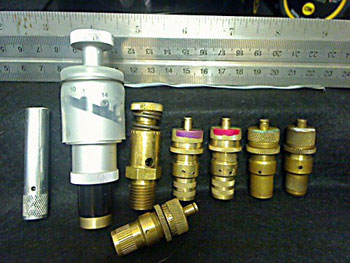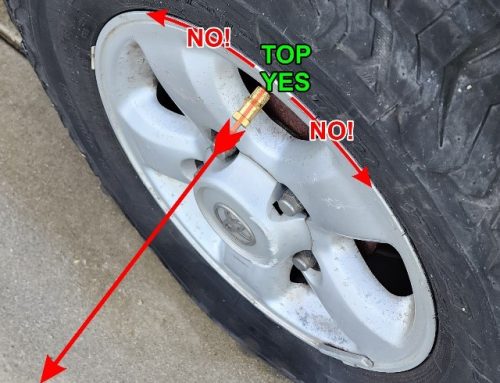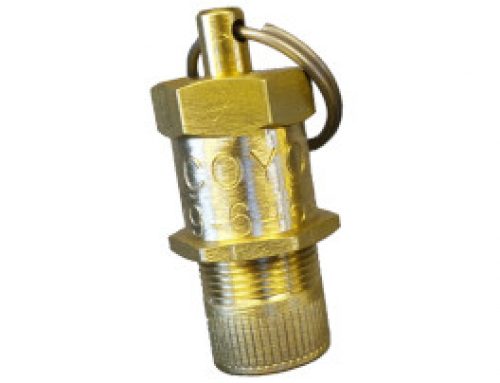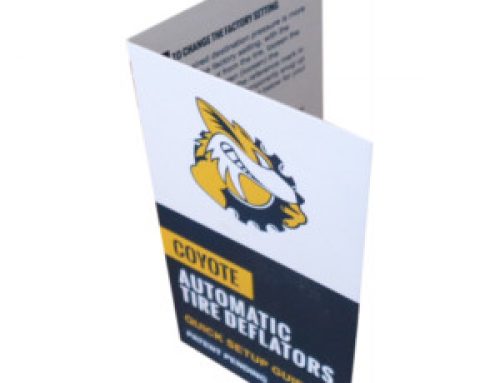AUTOMATIC TIRE DEFLATOR COMPARISON
FOR COYOTE LEGACY DEFLATORS ONLY
THIS ARTICLE CONTAINS INFORMATION ABOUT COYOTE LEGACY DEFLATORS. LEGACY DEFLATORS HAVE DIFFERENT SPECIFICATIONS, ASSEMBLY AND MAINTENANCE INSTRUCTIONS FROM THE NEWER COYOTE VORTEX V2 DEFLATORS. IF YOU ARE UNSURE ABOUT WHICH COYOTE DEFLATOR YOU OWN, READ THIS ARTICLE BEFORE ATTEMPTING TO ADJUST OR MAINTAIN YOUR COYOTE DEFLATOR.
CAUTION:
Low tire pressure makes for unfamiliar vehicle handling. Never deflate your tires unless you have a way to reinflate them to the pressure recommended by your vehicle or tire manufacturer. Compressed air (gas) presents several hazards, so always use protective eyewear when setting or using your Coyote Automatic Tire Deflators. Never completely remove the Adjustment Cap from the Main Body while screwed on an inflated tire. This will shoot parts out of the deflator body and may result in serious injury.
Editor’s note: The Coyote Automatic Tire Deflator is not included in this review since it was introduced in 2010, several years after this article was written.
 If you want to save some reading, go immediately to the underwater test video to see how all the pictured deflators turn ON and more importantly, turn OFF.
If you want to save some reading, go immediately to the underwater test video to see how all the pictured deflators turn ON and more importantly, turn OFF.
Automatic tire deflators are popping up all around the world. They vary in size and shape, and some look virtually identical to the original Staunies (front and center). My objective was to see how they worked compared to the Original Staun® Tyre Deflators. And since I was not in on the other manufacturers’ design, I cannot say what their design objectives were or if the test units were working properly. All I could do was report how they worked for me. The videos present that information.
However, I can tell you what the Staun® automatic tyre deflator design objectives were. It wanted a valve that decisively turned ON, decisively shut OFF and DID NOT LEAK after shut OFF – EVER! It wanted a deflator that was simple to adjust without tools, repeatable, reliable and easy to disassemble and clean.
All deflators were adjusted to 15±2 psi. Some of the valves were hard to adjust because they did not have distinctive turn ON or shut OFF qualities. To assist with ON/OFF detection, I used a microphone and looked at the audio waveform for a sharp exhaust air sound-level change. On one this was a little help, but on all others it was of no help.
I next individually examined each deflator on our standard trade show tire deflator demonstration fixture. I’d inflate the simulated tire to 30-something psi, screw a deflator on the standard valve stem just as I would a tire, observe and listen for how it turned ON and then, how it shut OFF.
Testing underwater is not new. When I first reported on the Staunies for my ECO4WD newsletter in 2001, before they were being sold in the USA, I tested them underwater to look for leaks after shut OFF. A leaky air valve cannot escape underwater evaluation and underwater testing has practical application, too! For the skeptics, I have personally had to lower my tire pressure while in a stream after finding the stream bed traction gave out. So, from a practical point of view, using the deflators underwater is not that far fetched. See for yourself how all of the pictured deflators performed underwater.




